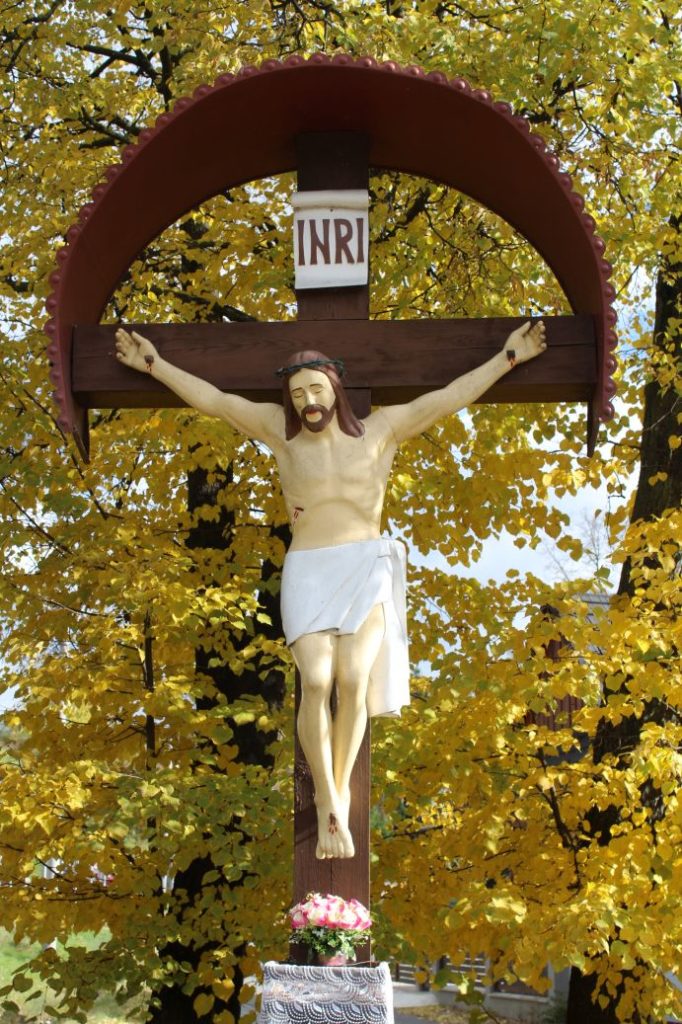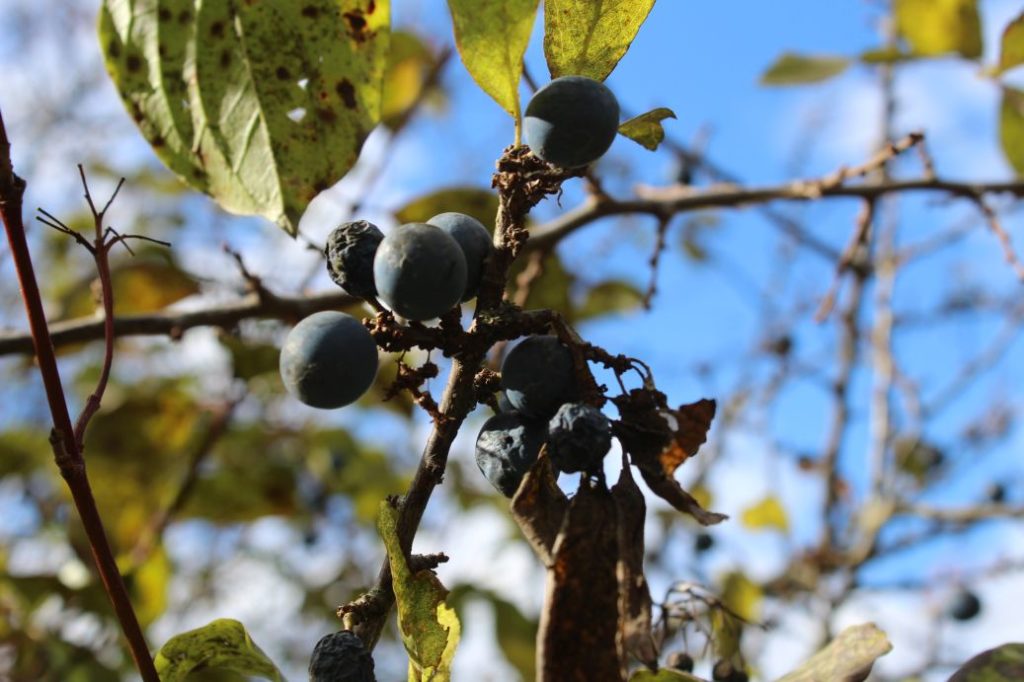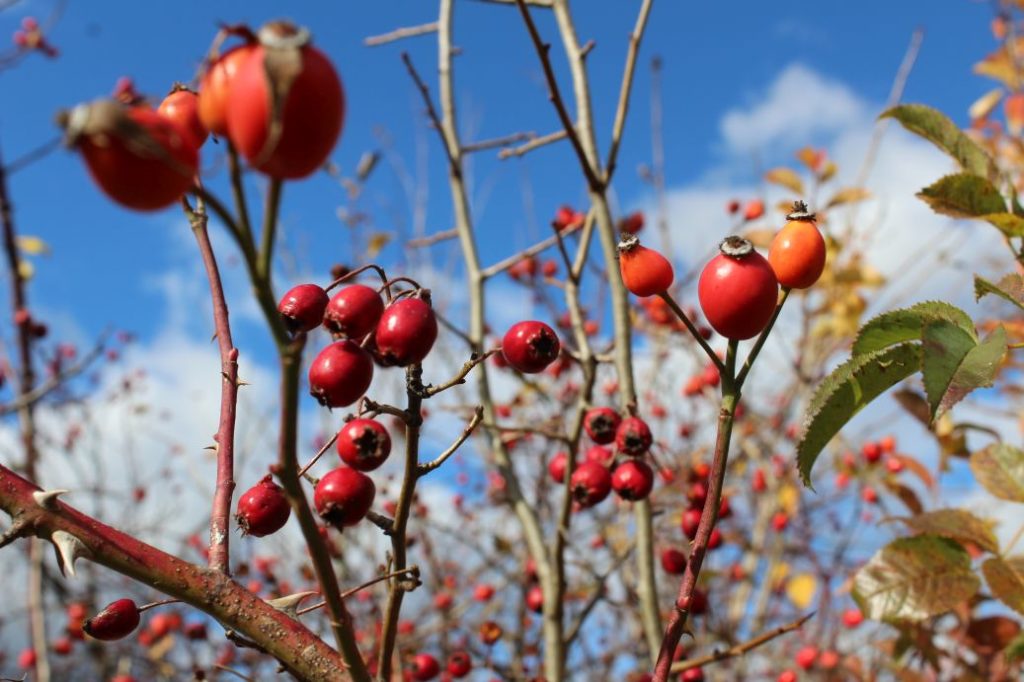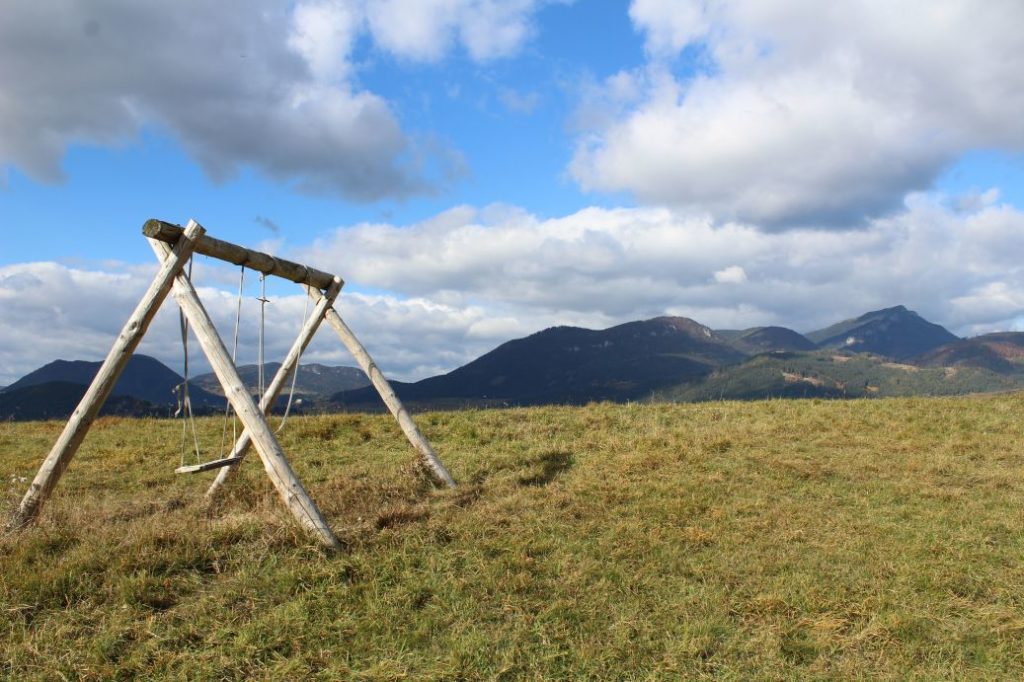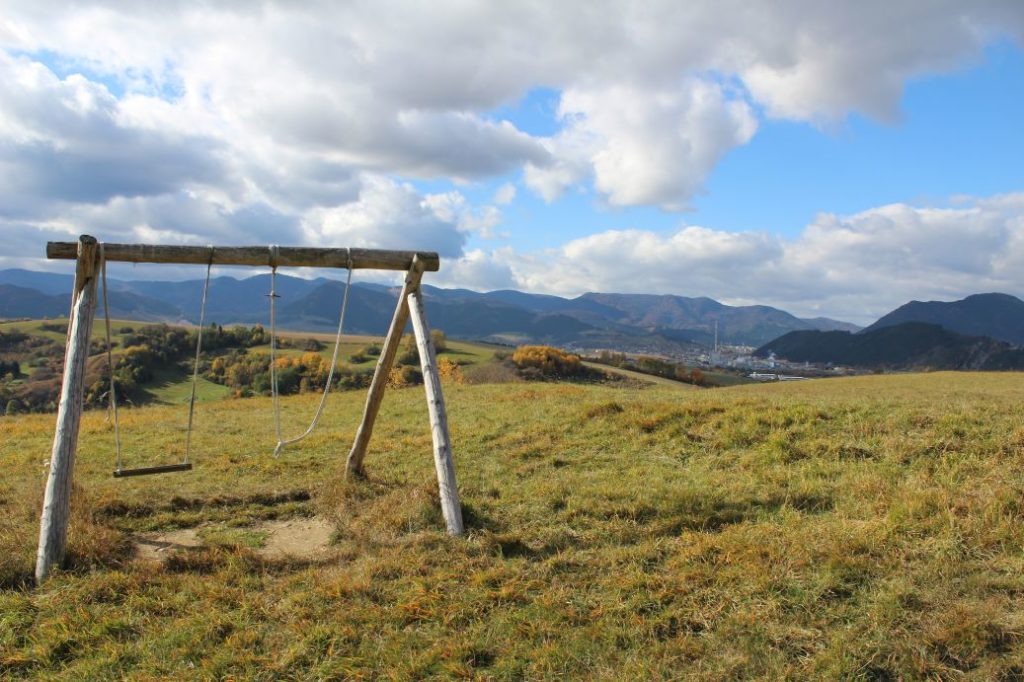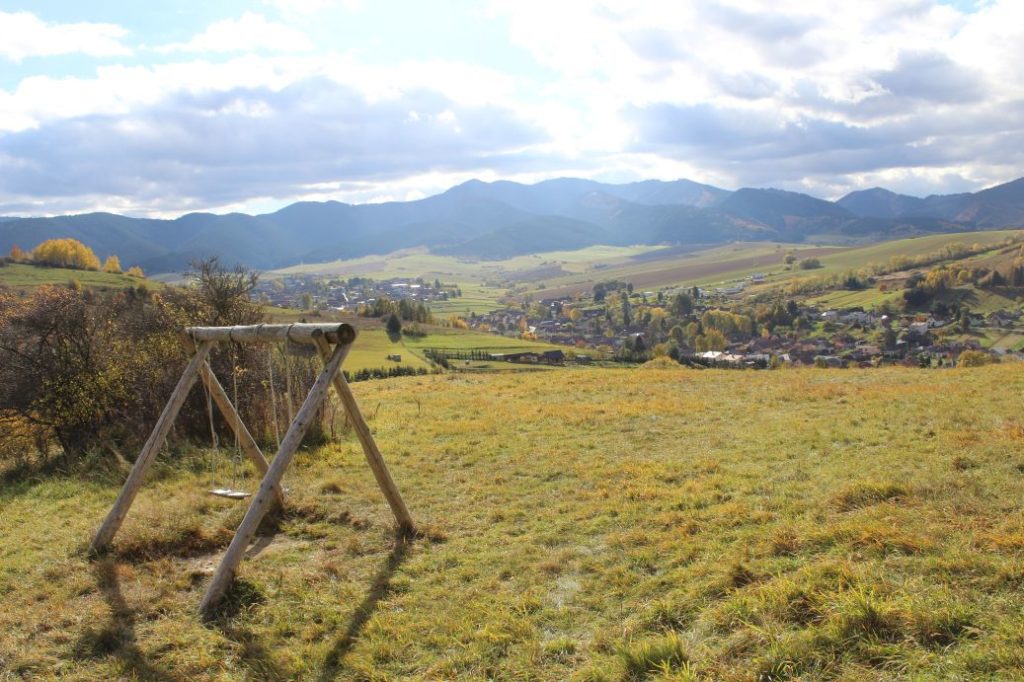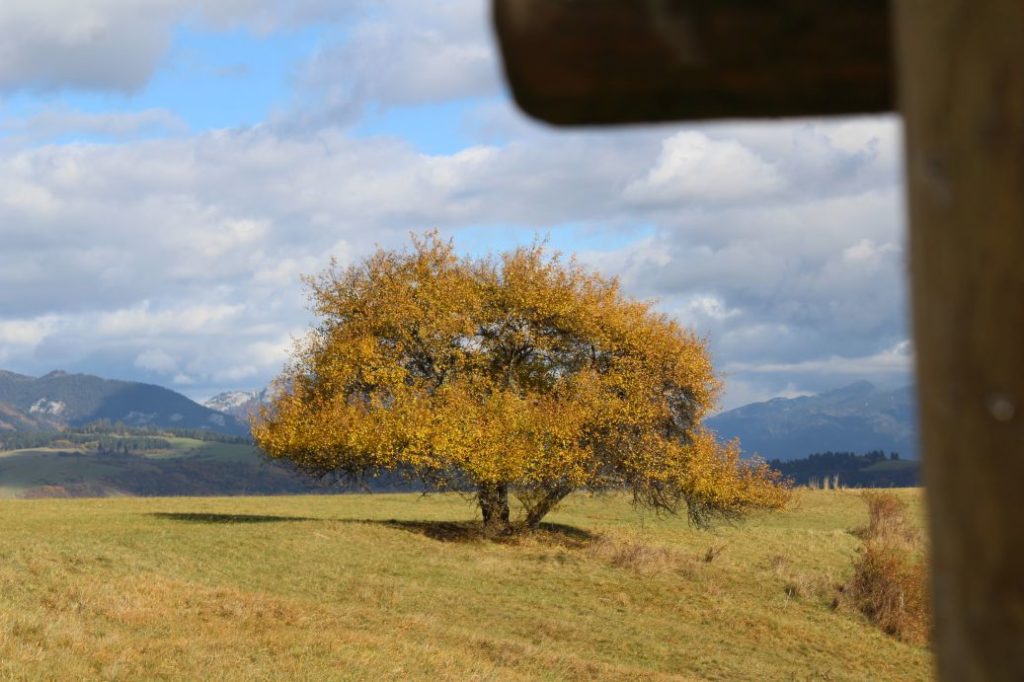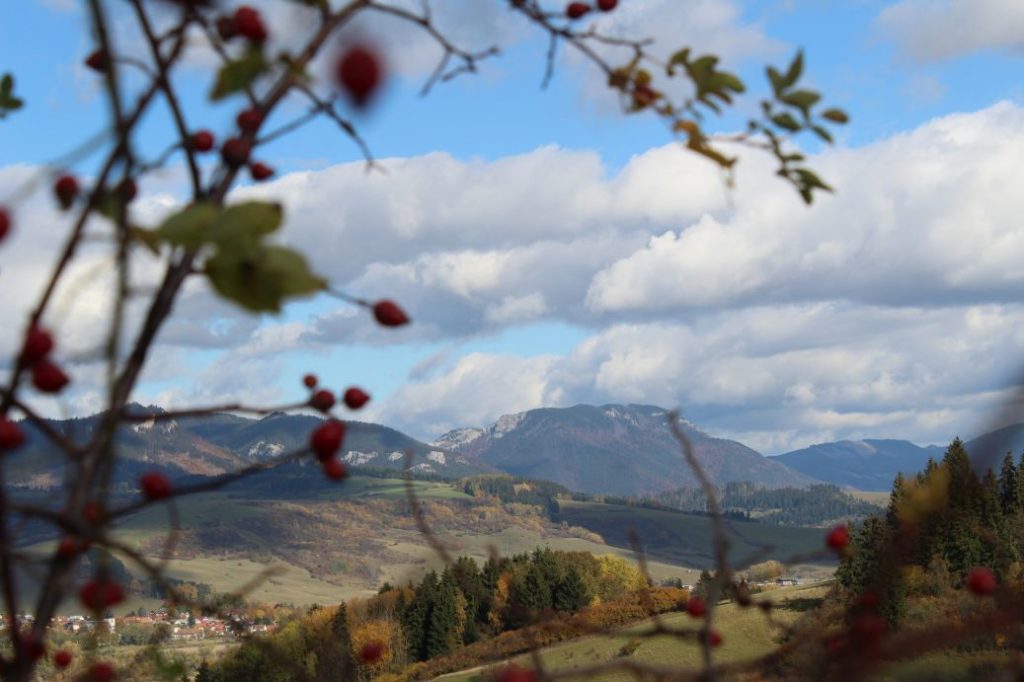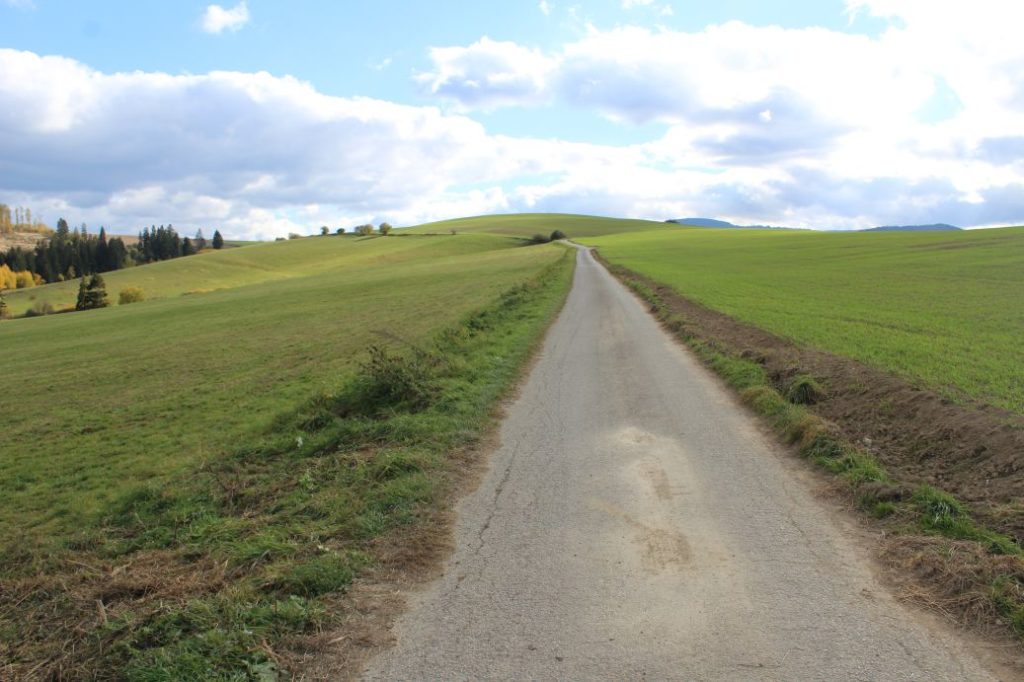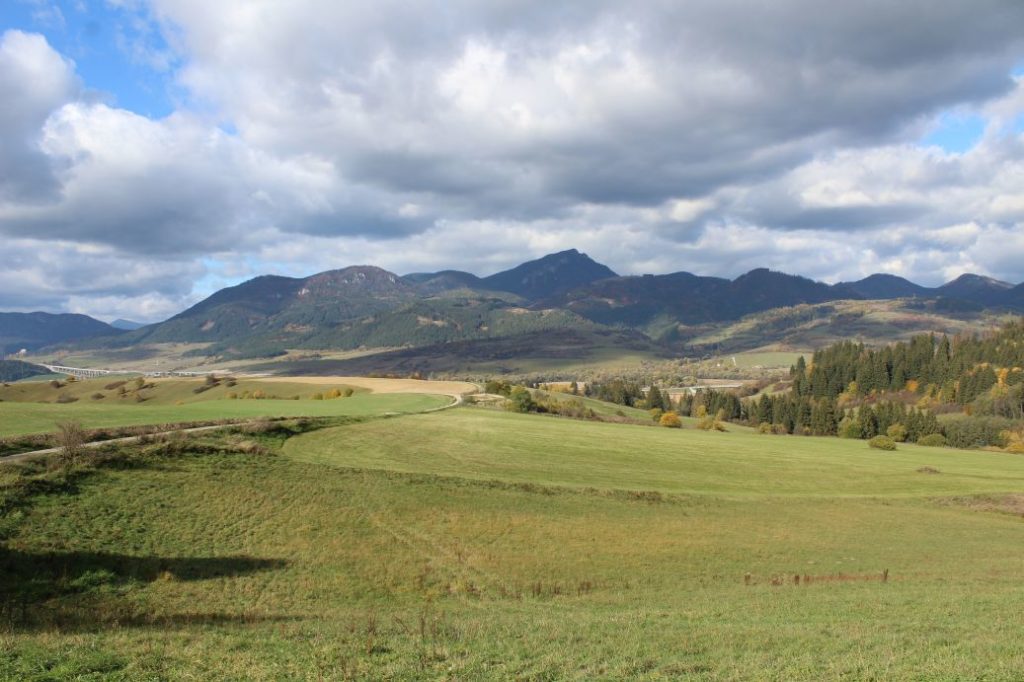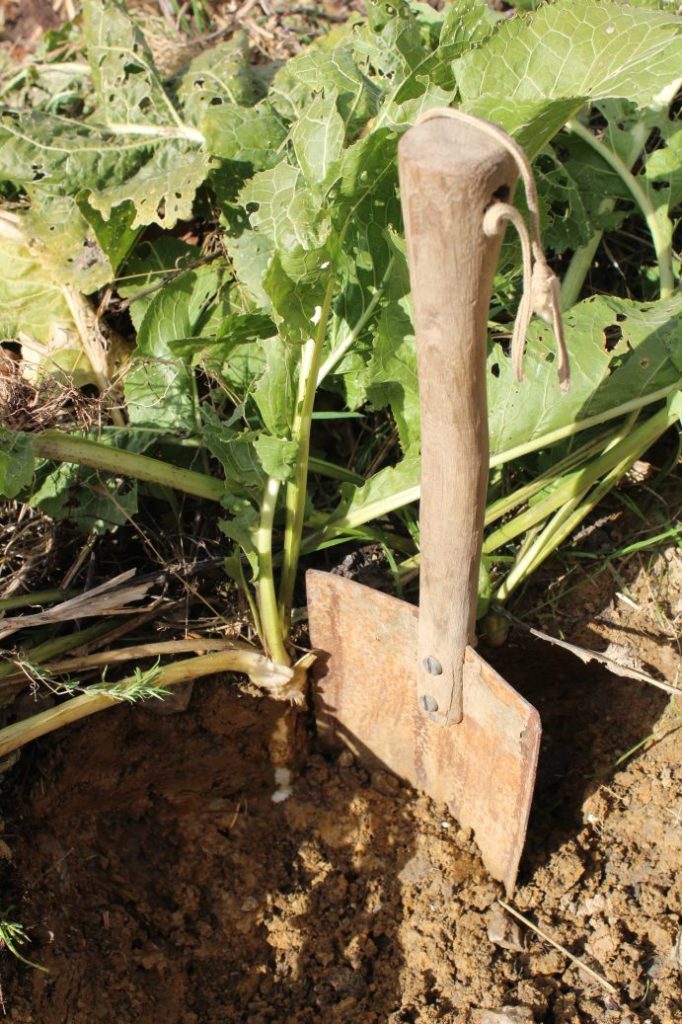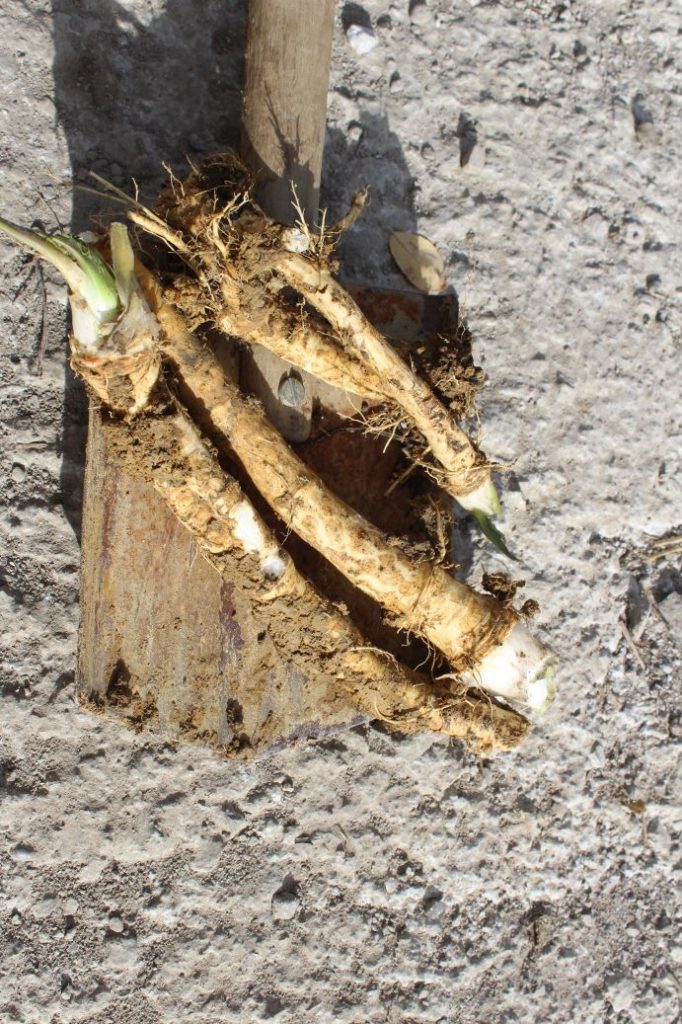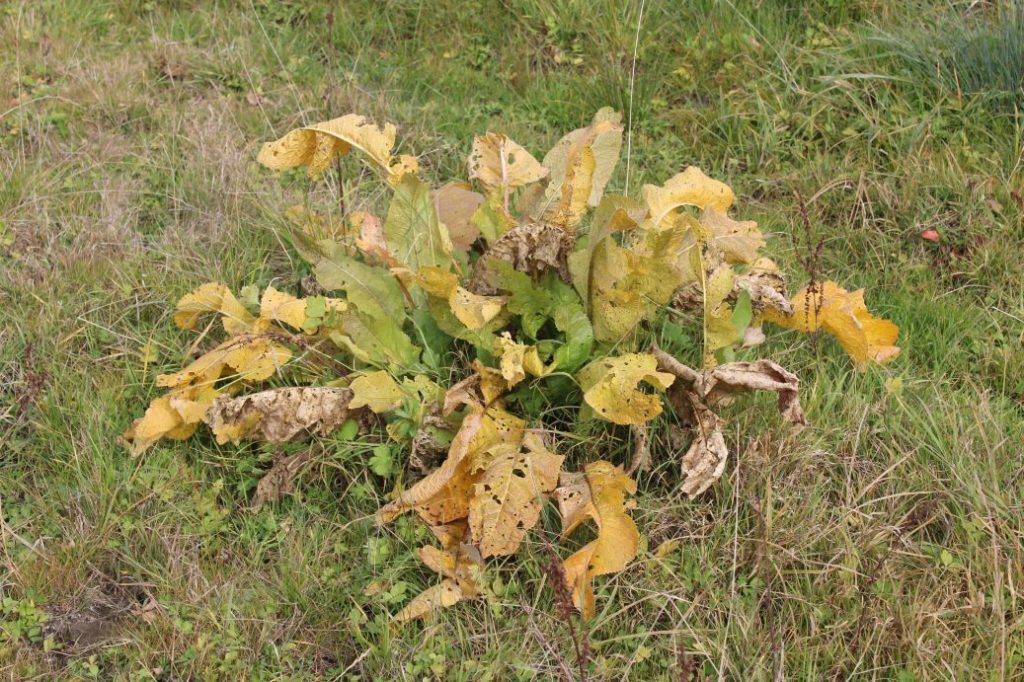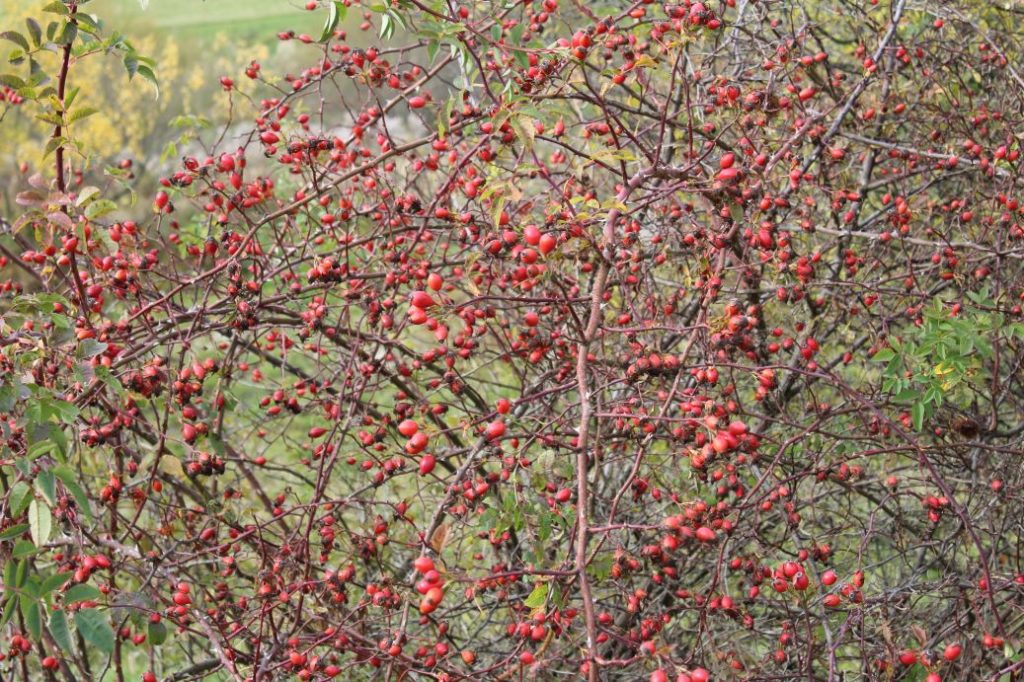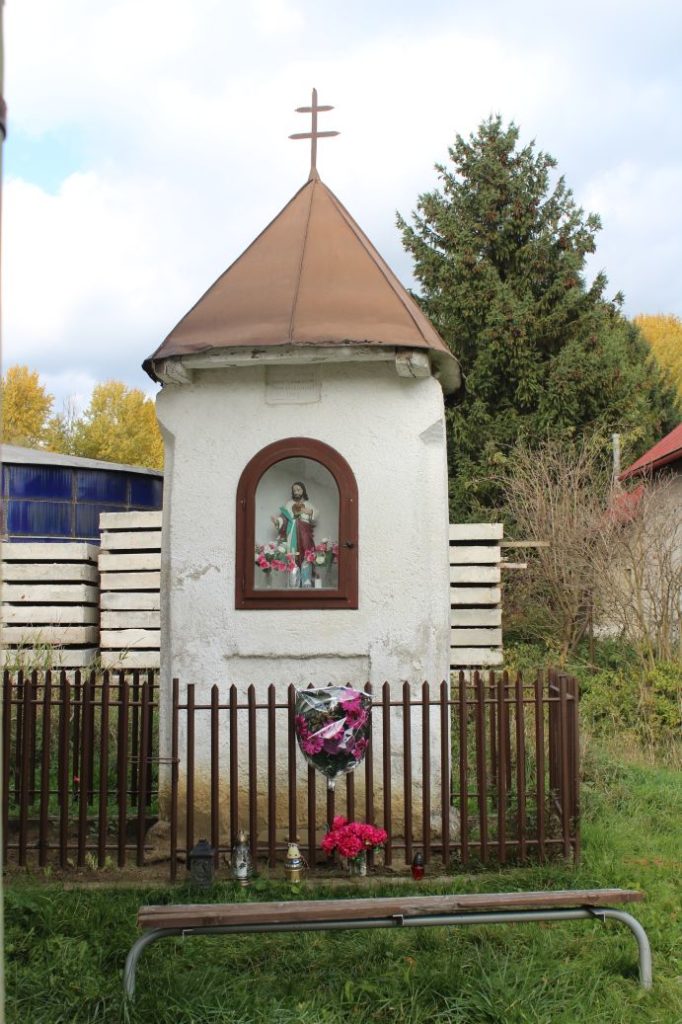Nature as Therapy: The Swing Set at Kostolná Hora
On a sunny day of the Saint Martin’s summer, we decided to visit the largest village of the Ružomberok District, Liptovské Sliače, where we went for a hike through Kostolná Hora to Bežan. This place is well-known mostly by the locals, people from the wider surroundings usually do not know about it. The route offers beautiful views of the wide surroundings, and it is not difficult. As the majority of the route runs on an asphalt road, it is suitable almost for any type of weather, in summer or winter.
In the region of Ružomberok, the beginning of November is when people usually harvest the last ones of this year’s crops. That is why we decided to collect what we are going to need for the preparation of pickled cabbage, which is prepared by the people of the Lower Lipton region probably in every household. What we mean is as simple as a horseradish root, which, in addition to being used as a basis at the bottom of the pickled cabbage, some people also add in between the layers.
“Chren dedinský” (“horseradish”) is a plant which is commonly found almost everywhere in Slovakia, you may find it in fields, meadows, near creeks, and at places with sufficient dampness. Horseradish has been cultivated in Slovakia since the Middle Ages. In our region, however, horseradish cultivation was never really necessary, as you can find wild horseradish growing at many places. A disadvantage to cultivation of horseradish in gardens is that it tends to spread all over the garden and it is difficult to remove it. For our purposes (to put it as a basis at the bottom of the pickled cabbage barrel), we will need about five to ten roots, depending on the size of the barrel. Horseradish is easy to recognize, however, it can be mistaken for one similar plant, which looks similar, but does not have its specific aroma. In addition to that, after breaking through the skin of its root, it also lacks the pungent aroma which is typical for the horseradish.
Apart from pickled cabbage, there are other ways in which horseradish can be used. Most often, it is used as a side dish in meals, or added to sauces and stews. Horseradish is a valuable source of potassium, magnesium, calcium and phosphor for our bodies. In addition to minerals, it also contains vitamins, in particular vitamin C. It also contains essential oils, which have antibacterial effects.
When packing for this trip, in addition to your old and used bag for collecting the things which do not belong in nature, also bring something you can use for digging, in order to get to the roots through the hard soil. We also recommend bringing paper bags for other gifts from nature you might see along the route.
To get to Liptovské Sliače, we ride a suburban bus and get off in Nižný Sliač at bus stop “Lipt.Sliače,Nižný Sliač,Bielený“. At the opposite side of the road, there is a local refreshment establishment and a wooden cross with a statue of Christ. We start walking on the road passing by the cross, and after a few dozen metres, at the place where the road is turning right, we continue directly uphill on an asphalt road. The slope on the left of the road is secured with a concrete wall, at the end of which we turn to the left, to a field road running above the fields and the yards of the family houses. The road leads us in the direction towards two structures with microwave antennas. We do not go directly to them, but continue on the road which is curving to the right. This section of the route is full of bushes with plenty of rose hips and hawthorn. Right at the beginning of the route, we picked a few sloes and ate them right away, and then we squeezed out the flesh of a few ripe rose hips, which had a pleasant sweet taste and neutralized the sour taste of the sloes. The field road runs between the fields, and at the place where we see a lonely deciduous tree in front of us on the right, we turn towards it. After taking a few steps, we might notice a wooden structure situated not far away from the tree. Fixed to the wooden structure is a swing, from which you get panoramic views of the village of Liptovské Sliače, the town of Ružomberok and the mountain ranges of the Great Fatra, the Low Tatras, the West Tatras and the Choč Mountains. After soaking in the views and having a swing, we return to the field road, on which we continue further in the direction along the ridge of Kostolná Hora. By the bushes with a few sloes, the road curves to the right, and by the fenced area, it connects to the asphalt road which we left earlier in order to visit the viewpoint with the swing. The road leads us below peak Bežan, which is the highest point of our route. At the place where there is a field road running from the woods and connecting to our road, we can enjoy the second most beautiful view of the surroundings on the route. The view now also includes the High Tatras with Kriváň and the Liptovská Mara reservoir. A more attentive eye should also not miss peak Chopok with a cableway structure below the peak. The road runs downhill in the direction towards the manure pit, and once again there are plenty of bushes with rose hips by the road. In front of the manure pit, the road curves to the right, and at an S curve situated a bit further downhill, we found our first horseradish. At this place, the road is damaged by a landslide, which is why there is excavated soil deposited below the road. Excavated soil is a good environment for horseradish growth, and as it is quite soft, it was easy to dig into. There are some unwritten rules to be followed when digging up wild horseradish. We never dig up all the roots in a horseradish bunch, always leaving something and putting the leaves and some pieces of the roots back in the pit that we dug up, covering it up with the excavated soil, so that the horseradish can continue to grow and we can come back next year to dig up another root. At the spot, we clean up the roots only roughly, to remove the biggest dirt, because otherwise they would dry up and harden, if not used immediately. Every piece of the root that drops down as we clean it could possibly grow into a new horseradish plant and it is not our intention to spread it all over the place. After digging up the horseradish, we picked up some litter that was brought here with the deposited soil, so that we do not just take away the good things from nature, but explore these locations with the already mentioned approach of #ObjavUdržateľnéSlovensko (DiscoverSustainableSlovakia). The downhill road leads us towards family houses and we might notice plenty of horseradish bunches on the left side of the road. There is a lot of it growing here, but the soil is hard and digging is a lot more difficult, as evidenced by the wooden handle of our spatula which broke off. The road continues across the creek, after which it curves to the right, and passing by the trees, it arrives at the houses at “Na Bežan“ Street. At the end of the street on the right, after passing by the last house, we might notice a brick chapel with a bench. At the intersection, we go to the left, and after about 200 metres, we arrive at bus stop “Lipt.Sliače,Vyšný Sliač,družstvo“, from where we can get back to Ružomberok.
If we have enough time, we may continue to the next bus stop, near which we will find a guest house with a restaurant and a local refreshment establishment. If we are in the mood for more walking, we might visit mineral spring Teplica or the Church of Two Hearts, which are situated in the vicinity.
The text was prepared by Milan Kolčák and Ján Benčík from the Ružomberok Information Centre.
This is the sixth article of the article series with subtitle “Nature as Therapy”.
Published: 28.10.2021

